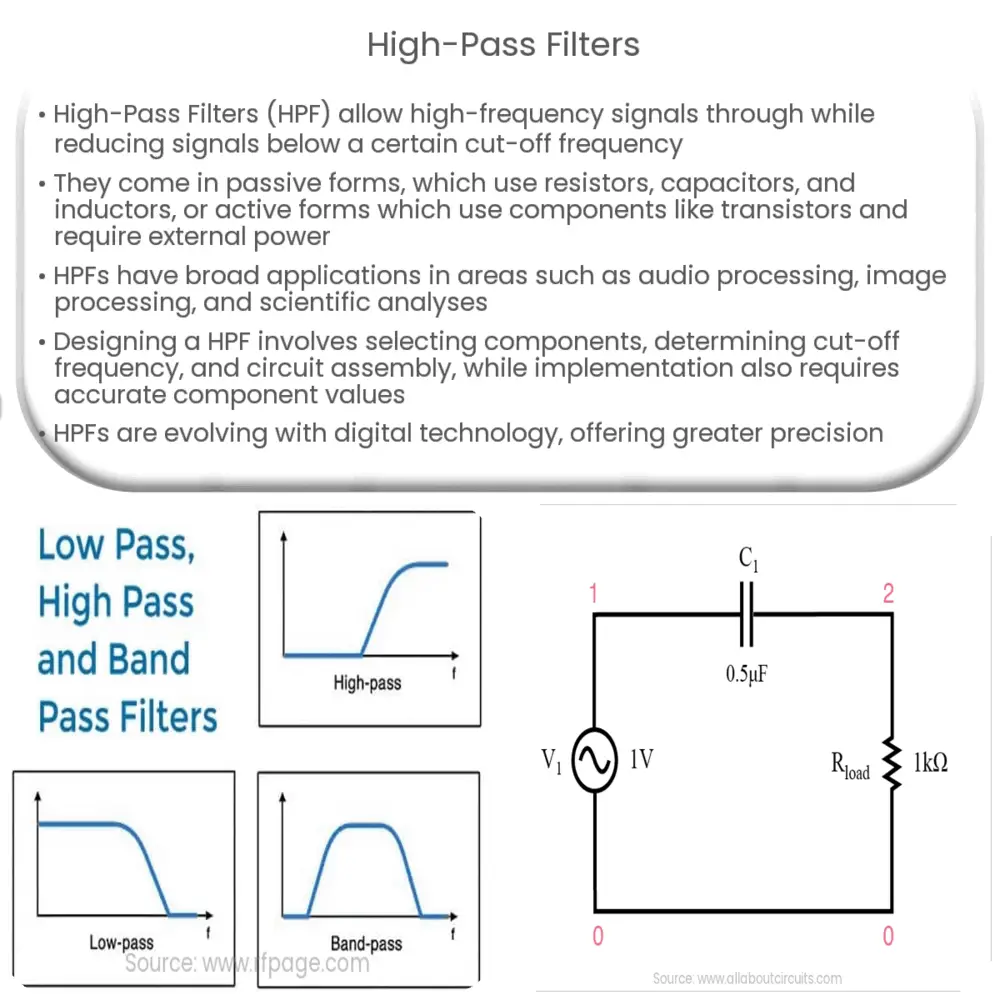Explore the principles, types, applications, and future of high-pass filters in electronics and signal processing.

Understanding High-Pass Filters
A High-Pass Filter (HPF) is an integral aspect of signal processing and electronics. In its essence, it is a type of electronic filter designed to allow high-frequency signals to pass through while attenuating, or reducing, the amplitude of signals with frequencies lower than a certain cut-off frequency.
Working Principle of High-Pass Filters
The basic operation of a high-pass filter is heavily grounded in the principles of electronic circuits and frequency response. The cut-off frequency, denoted by fc, determines the frequency at which the output signal is 70.7% of the input signal. Frequencies above this cut-off point are permitted to pass, while those below it are greatly reduced.
Types of High-Pass Filters
- Passive High-Pass Filters: This type of filter is made up of passive electronic components, such as resistors, capacitors, and inductors. Passive high-pass filters do not require any external power source to operate.
- Active High-Pass Filters: Unlike their passive counterparts, active high-pass filters use active electronic components, such as transistors and operational amplifiers. These filters require an external power source to function, providing benefits like amplification of the output signal.
Applications of High-Pass Filters
- High-pass filters are commonly used in audio processing to remove low-frequency noise. This includes applications like audio amplifiers and equalizers where high frequencies are desired.
- In image processing, high-pass filters are often used to enhance the edges and other high-frequency components in digital images.
- They are also used in various scientific and industrial applications, including seismic analysis, radar systems, and in the biomedical field for interpreting Electrocardiograms (ECGs).
High-pass filters are indispensable tools in electronics and signal processing. Their role in allowing high-frequency signals to pass while blocking low-frequency signals is crucial to a vast array of applications.
Design and Implementation of High-Pass Filters
Designing a high-pass filter involves several steps, including the selection of appropriate components, determining the cut-off frequency, and assembling the circuit. The most common form of a high-pass filter involves the use of a resistor and capacitor in a suitable configuration. The cut-off frequency of such a filter can be calculated using the formula: fc = 1/(2πRC), where R represents the resistance, and C stands for the capacitance.
Moreover, the implementation of an active high-pass filter requires the use of operational amplifiers in combination with resistors and capacitors. Such a setup not only helps in filtering low-frequency signals but also provides an amplified output.
Considerations and Limitations
While high-pass filters are incredibly beneficial, it’s important to note their limitations. The effectiveness of a high-pass filter is heavily dependent on the accuracy of its components. For example, a small variance in the value of a resistor or capacitor can significantly alter the cut-off frequency. Moreover, active high-pass filters require a stable power supply and can introduce noise into the system if not correctly designed or implemented.
Future of High-Pass Filters
High-pass filters continue to evolve with advancements in technology. With the rise of digital signal processing, we now have digital high-pass filters that provide more flexibility and precision than their analog counterparts. Additionally, with the advent of programmable devices like Field Programmable Gate Arrays (FPGAs), filters can now be implemented digitally, further expanding their potential applications.
Conclusion
In conclusion, high-pass filters play a pivotal role in the world of electronics and signal processing. From audio processing to biomedical applications, their ability to filter out undesirable low-frequency signals is invaluable. Despite their limitations, the versatility and utility of these filters cannot be overstated. As technology advances, we can expect to see more sophisticated and precise high-pass filters, further enhancing our ability to manipulate and analyze signals.

